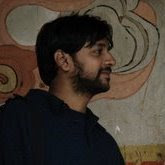
Bengaluru to Celebrate Queer Pride for the Second Time
After last year’s successful and vibrant queer pride march, which saw over 600 people celebrating and affirming queer lives in Bengaluru alone, Karnataka is gearing up for its second edition christened Karnataka Queer Habba. This year we as individuals and organisations, under the banner of Campaign for Sex-workers and Sexual Minorities Rights (CSMR), have decided to extend the festivities to a week beginning with a cricket match on June 21st and culminating with the pride march on June 28th. Come celebrate along with us as Bangalore’s LGBTQ community paints the town pink on the 28th June 2009. Like last year, this time too the pride march will begin at National College, Basavanagudi at 2:00 p.m and go up to Puttanachetty Town Hall via Sajjan Rao Circle and Minerva Circle and will culminate with a series of speeches as we gather on the Town Hall steps. Celebrities including actress Arundhati Nag will address the celebration at the end of the march.
After the success of last year’s pride we have decided to host an even bigger event christened “Karnataka Queer Habba” this year. As a run up to this year’s Pride March we will be hosting a week of events across the city. The events will include:
“Queering the Pitch”: Cricket Match
- When : Sunday, June 21st, 10 a.m. to 5 p.m.
- Where : RBANMS Play Ground, Gangadhar Chetty Road, Ulsoor.
- Contact : Gurukiran 98803 65692 or Sunil 99450 90301
Dalit-Sexual Minorities Dialogue on Stigma and Discrimination
- When : Monday, June 22nd, 11 a.m. to 4 p.m.
- Where : Indian Social Institute, 24 Benson Road
- Contact : Manohar 96322 23460
Release of Human Rights Watch Report - This Alien Legacy: The Origins of “Sodomy” Laws in British Colonialism - followed by a discussion “Laws that Terrorise: Threats to Indian Democracy”
- When : Tuesday, June 23rd, 4 p.m. to 7 p.m.
- Where : Institute of Agricultural Technologies, Queens Road.
- Contact : Arvind 99800 10933
Pirat Dyke Film Screening of One in Ten and Desert Hearts
- When : Wednesday, June 24th, 6 p.m.
- Where : Swabhava Office, 4th Floor, No. 1., M.S. Plaza, 13th A Cross, 4th Main Road, Sampangiramnagar (opposite Sampangiramnagar Police Station)
- Contact : Nitya 99164 82928
Public Discussion on Religion and Sexuality
- When : Thursday, June 25th, 4:30 p.m. to 7:00 p.m.
- Where : United Theological College (UTC), Millers Road
- Contact : Shubha 92434 46105
Evening of Theatre and Dance Performance
- When : Friday, June 26th, 4:30 p.m. to 8:00 p.m.
- Where : St. Josephs College of Commerce auditorium
- Contact : Sumati 98451 65143
Story Telling Sessions
- When : Saturday, June 27th, 4 p.m. to 7 p.m.
- Where : Cubbon Park
- Contact : Deepak 93437 63497
Bengaluru Pride 2009
- When : Sunday, June 28th, 2:00 p.m. to 6:00 p.m.
- Where : National College Basavanagudi to Puttanachetty Town Hall via Sajjan Rao Circle, Minerva Circle and J.C. Road
- Contact : Siddharth 98450 01168 or Nithin 98860 81269
